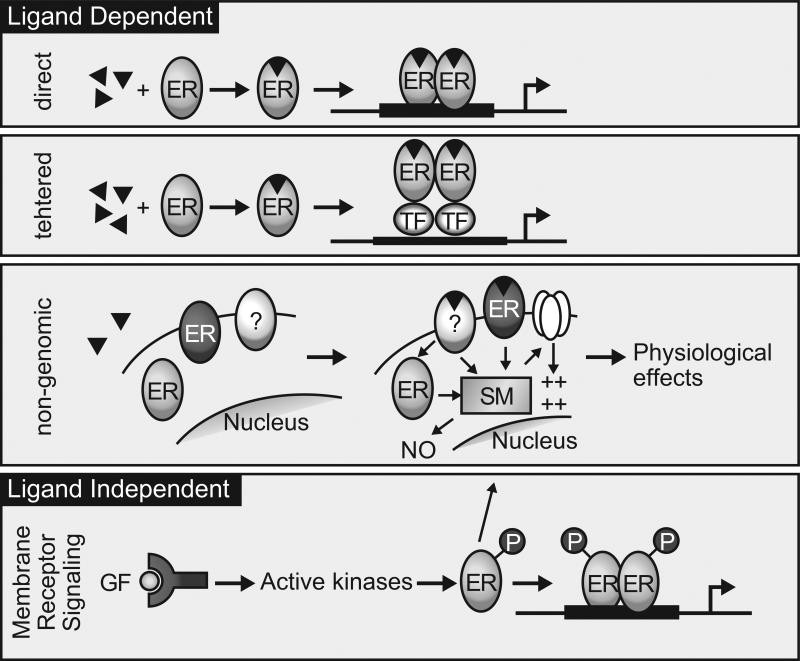Figure 2.
Ligand-dependent and ligand-independent nuclear receptor mechanisms. The direct “classic” model of estrogen receptor (ER) action involves direct interaction between ER bound to estrogen (triangles) and ERE; the tethered pathway utilizes indirect “tethering” of ER to genes via interactions with other transcription factors (TF). “Nongenomic” signaling is initiated by membrane-localized receptors modulating extranuclear second messenger (SM) signaling pathways. Ligand-independent responses occur as a result of transduction of membrane receptor signaling, such as growth factors (GF), to nuclear ER. Reproduced, with permission, from Binder AK, Winuthayanon W, Hewitt SC, Couse JF & Korach KS (2015) Steroid receptors in the uterus and ovary. In Knobil and Neill's Physiology of Reproduction, 4th Edn, pp 1099–1193. Eds TM Plant & AJ Zeleznik. Elsevier.

